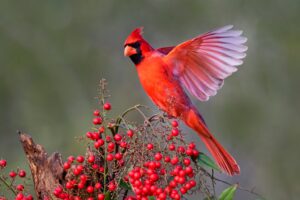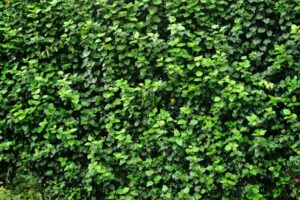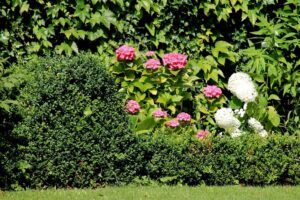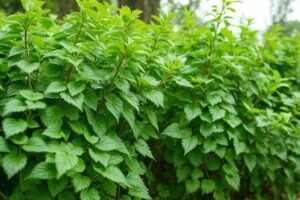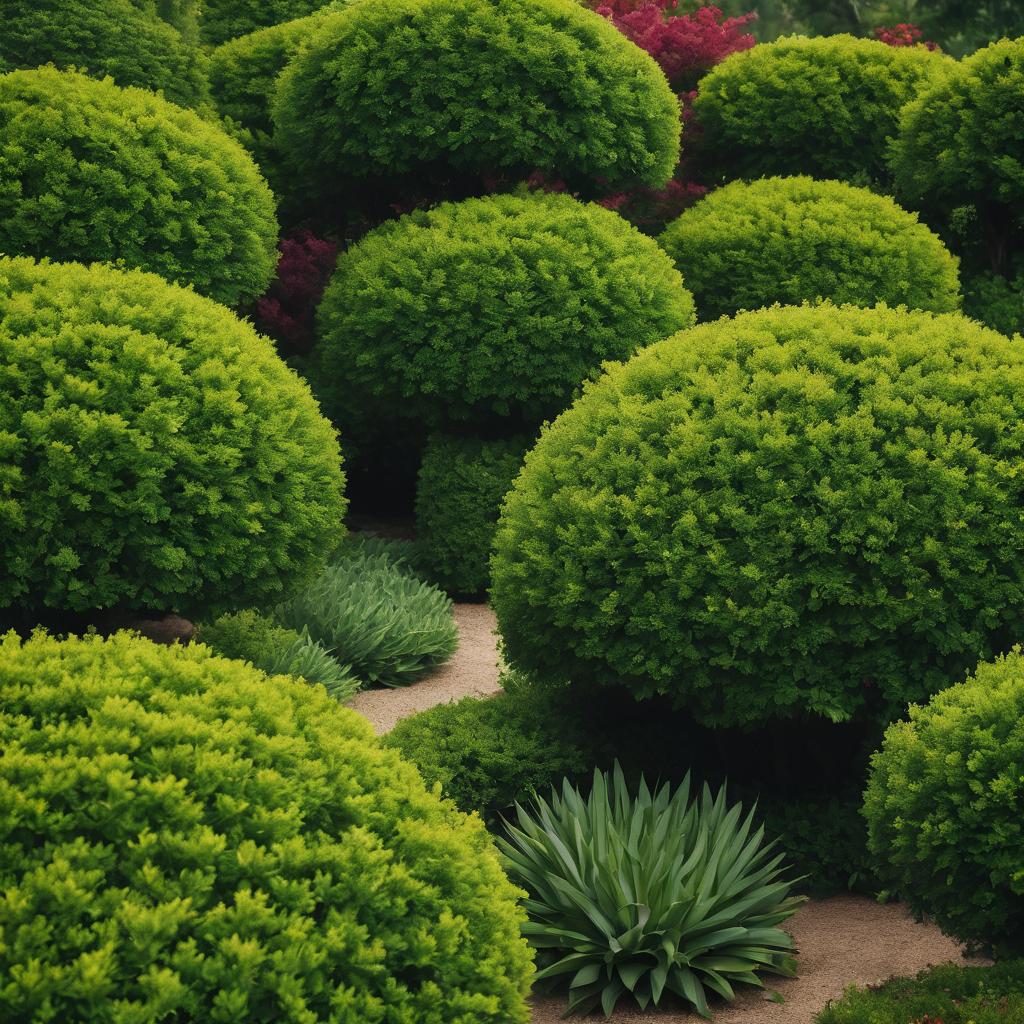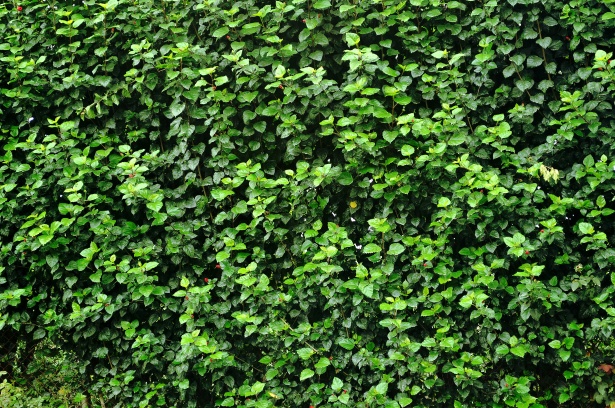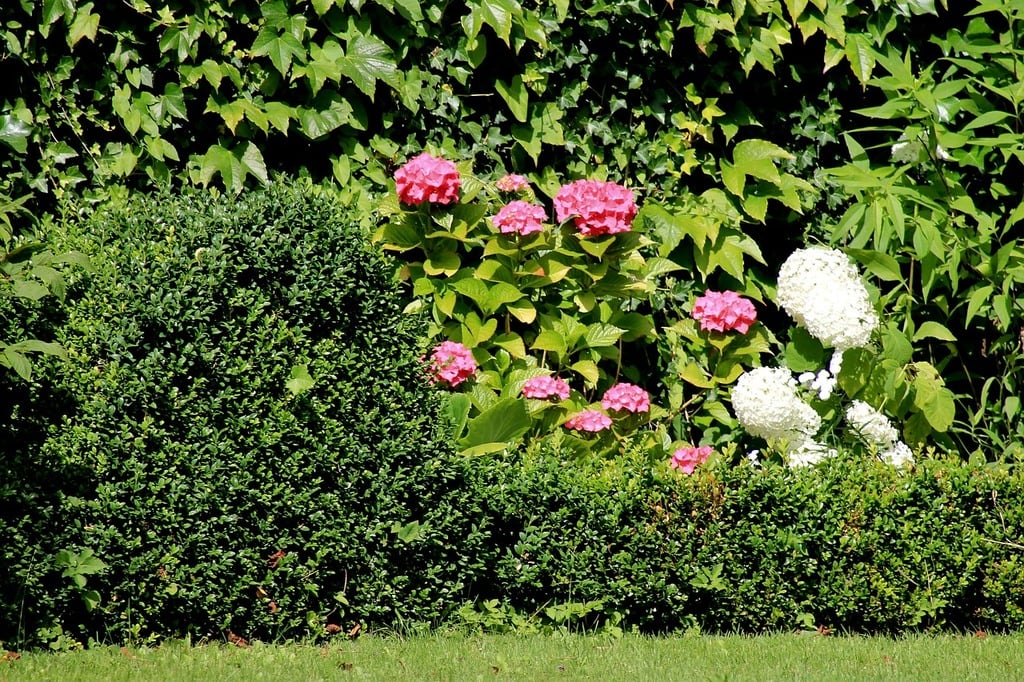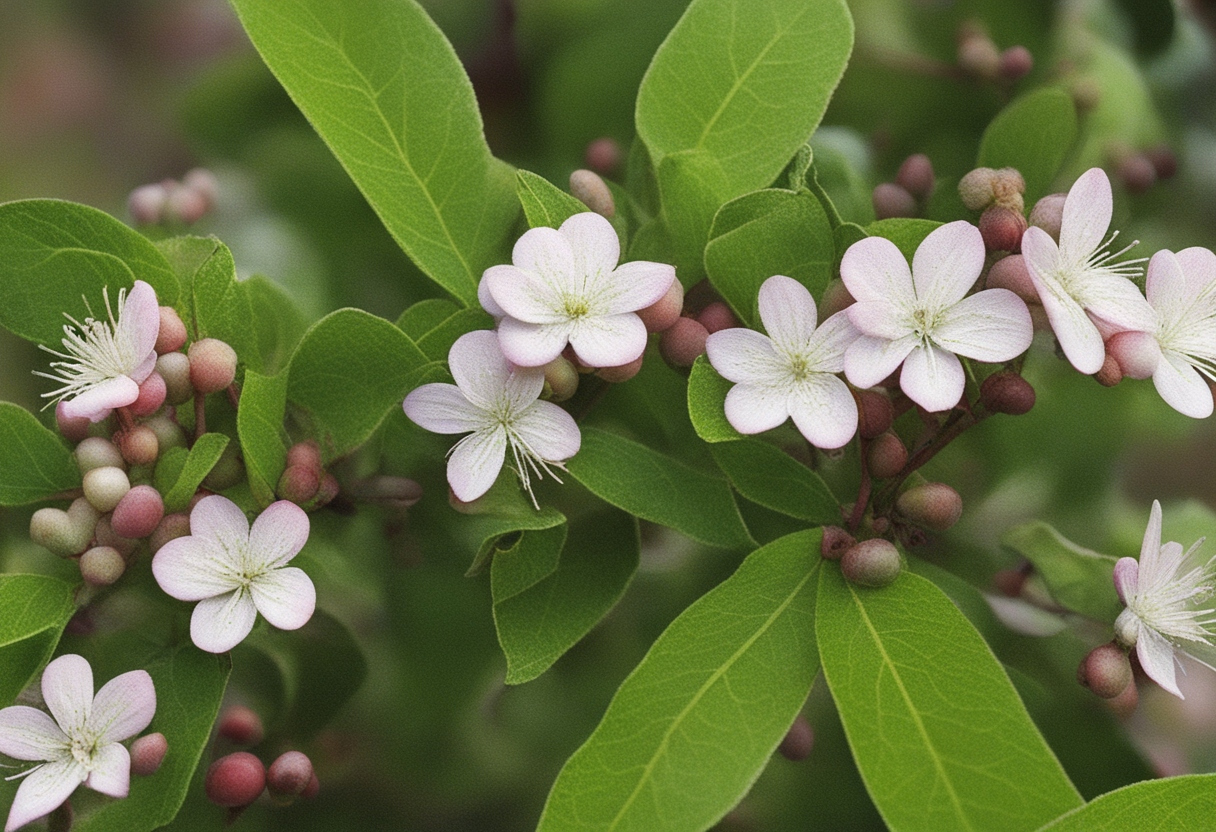The Benefits of Incorporating Shrubs in Garden Design
Shrubs can bring numerous benefits to any garden design. One of the key advantages is their ability to add structure and depth to the landscape. With their varying heights and shapes, shrubs can create a layered effect, providing a sense of visual interest and dimension to your garden. Whether you choose to use them as focal points or to provide a backdrop for other plants, shrubs can help establish a well-balanced and aesthetically pleasing garden design.
Another benefit of incorporating shrubs in your garden is their versatility. Shrubs come in a wide range of sizes, colors, and textures, offering endless possibilities for creativity and personalization. Whether you’re looking to create a lush and colorful garden or prefer a more minimalist approach, there is a shrub out there that will suit your vision. Additionally, many shrubs are low-maintenance and can withstand different weather conditions, making them a practical choice for any garden. Overall, incorporating shrubs into your garden design can enhance the overall visual appeal and provide long-lasting beauty for years to come.
• Shrubs add structure and depth to the landscape, creating a layered effect
• They provide visual interest and dimension to the garden design
• Can be used as focal points or as a backdrop for other plants
• Versatile in terms of size, color, and texture, allowing for creativity and personalization
• Suitable for both lush and colorful gardens or minimalist designs
• Many shrubs are low-maintenance and can withstand different weather conditions
• Enhances the overall visual appeal of the garden
• Provides long-lasting beauty year after year.
Selecting the Right Shrubs for Your Garden
When selecting shrubs for your garden, it is important to consider several factors to ensure the best fit for your space. One key consideration is the size of the shrub at maturity. Make sure to check the expected height and spread of the shrub to ensure it will have enough space to grow without overcrowding other plants or structures in your garden. Additionally, consider the overall shape and form of the shrub. Some shrubs have a more upright habit, while others have a spreading or cascading form. Choosing the right shape and form can help create a harmonious and balanced look in your garden.
Another important factor to consider is the specific growing conditions in your garden. Different shrubs have varying preferences for sunlight, soil moisture, and soil pH. Before making your selection, it is helpful to assess the amount of sunlight your garden receives throughout the day and identify any areas with specific soil conditions, such as areas that are consistently moist or dry. This will help you choose shrubs that are well-suited to thrive in your specific garden environment. Additionally, consider the maintenance requirements of the shrubs you are considering. Some shrubs may require more pruning or regular care, while others are low-maintenance and can thrive with minimal intervention. Taking these factors into account will help you choose shrubs that are both visually appealing and well-suited to your garden’s conditions.
• Consider the size of the shrub at maturity to ensure it fits well in your garden space
• Check the expected height and spread of the shrub to avoid overcrowding other plants or structures
• Take into account the shape and form of the shrub for a harmonious and balanced look in your garden
• Assess the specific growing conditions in your garden, such as sunlight, soil moisture, and pH levels
• Identify areas with specific soil conditions, like consistently moist or dry areas
• Choose shrubs that are well-suited to thrive in your specific garden environment based on their preferences
for sunlight, soil moisture, and pH levels.
• Consider maintenance requirements when selecting shrubs – some may require more pruning or regular care
while others are low-maintenance.
• Select visually appealing shrubs that are also well-suited to your garden’s conditions.
How Shrubs Enhance the Visual Appeal of Your Landscape
Shrubs can play a pivotal role in enhancing the visual appeal of your landscape. With their varying heights, shapes, textures, and vibrant colors, they add depth and dimension to the overall design. Whether you prefer a formal or informal look, shrubs can be strategically placed to create focal points or provide a backdrop for other plants and flowers.
One of the key benefits of incorporating shrubs is their ability to provide year-round interest. Unlike some flowers that bloom for a short period, shrubs offer long-lasting beauty throughout the seasons. From delicate blossoms in spring to lush green foliage in summer, and from fiery red leaves in autumn to architectural silhouettes in winter, shrubs bring visual interest and allure to your landscape year after year. Moreover, their evergreen varieties contribute to the overall structure and stability of your garden, adding a sense of permanence and reliability to the space.
• Shrubs come in a wide variety of heights, shapes, textures, and colors, allowing for endless possibilities in landscape design.
• They can be strategically placed to create focal points or provide a backdrop for other plants and flowers.
• Unlike some flowers that have a short blooming period, shrubs offer long-lasting beauty throughout the seasons.
• Delicate blossoms in spring, lush green foliage in summer, fiery red leaves in autumn, and architectural silhouettes in winter ensure year-round interest.
• Evergreen varieties of shrubs contribute to the overall structure and stability of your garden.
• Adding shrubs to your landscape creates a sense of permanence and reliability.
Creating Privacy and Shelter with Shrubs in Your Garden
When it comes to creating privacy and shelter in your garden, incorporating shrubs can be a smart and effective choice. Shrubs are not only beautiful additions to your landscape, but they also provide a natural barrier that can block unwanted views and shield your outdoor space from wind and noise. By strategically placing larger, dense shrubs along property lines or near windows, you can create a sense of seclusion and tranquility in your garden.
Shrubs also offer a great opportunity to attract wildlife to your garden. Many species of birds and butterflies are drawn to the shelter and food sources provided by shrubs. By selecting shrubs that produce berries or flowers, you can not only enhance the visual appeal of your garden but also create a vibrant ecosystem that supports and attracts a variety of wildlife. From hummingbirds to songbirds, adding shrubs to your garden can turn your outdoor space into a lively and vibrant sanctuary for both you and nature.
• Shrubs can provide privacy and shelter in your garden
• They create a natural barrier that blocks unwanted views and shields against wind and noise
• Placing larger, dense shrubs along property lines or near windows can create a sense of seclusion and tranquility
• Shrubs attract wildlife such as birds and butterflies to your garden
• Selecting shrubs that produce berries or flowers enhances the visual appeal of your garden
• Creating a vibrant ecosystem with shrubs supports and attracts a variety of wildlife
Using Shrubs as Borders and Edging in Garden Design
Shrubs serve as excellent borders and edging in garden design, providing structure and definition to your outdoor space. By strategically placing shrubs along the borders of your garden, you can create a seamless transition between your garden and the surrounding landscape. The lush green foliage or vibrant blooms of shrubs can act as a visual frame, enhancing the overall aesthetic appeal of your garden.
In addition to their decorative function, shrubs used as borders and edging can also serve practical purposes. They can help to prevent the encroachment of weeds and unwanted plants into your garden beds, acting as a natural barrier. Furthermore, shrubs can provide some protection against erosion, particularly if your garden is on a sloping terrain. By selecting the right shrubs for your borders and edging, you can create a functional and beautiful garden design that is easy to maintain.
• Shrubs create structure and definition in garden design
• They provide a seamless transition between the garden and surrounding landscape
• The lush foliage or vibrant blooms of shrubs enhance the overall aesthetic appeal
• Shrubs act as natural barriers, preventing weed encroachment into garden beds
• They can also help protect against erosion, especially on sloping terrains
• Choosing the right shrubs for borders and edging makes maintenance easier
Low-Maintenance Shrubs for Easy Garden Care
When designing a garden, many homeowners prioritize low-maintenance shrubs for easy garden care. These shrubs not only add beauty to the landscape, but they also require minimal effort to keep them looking their best. One excellent choice is the evergreen boxwood shrub. With its dense foliage and compact growth habit, the boxwood is not only aesthetically pleasing, but it also requires little pruning and is relatively resistant to pests and disease. Another low-maintenance option is the dwarf yew shrub. This hardy shrub thrives in various growing conditions and requires minimal watering and fertilizing. Its dark green foliage adds a touch of elegance to any garden while providing year-round interest.
In addition to boxwoods and dwarf yews, another low-maintenance shrub to consider is the Japanese aucuba. Known for its striking variegated foliage, the Japanese aucuba adds a pop of color to any garden. Not only is this shrub drought-tolerant, but it also thrives in both shade and partial sunlight, making it a versatile choice for various garden conditions. Furthermore, its slow growth rate means less pruning is needed, saving you time and effort in your garden maintenance routine. With these low-maintenance shrubs, you can create a beautiful and vibrant garden without breaking a sweat.
• Evergreen boxwood shrub:
– Dense foliage and compact growth habit
– Requires little pruning
– Resistant to pests and disease
• Dwarf yew shrub:
– Thrives in various growing conditions
– Requires minimal watering and fertilizing
– Dark green foliage adds elegance
• Japanese aucuba:
– Striking variegated foliage adds color to the garden
– Drought-tolerant
– Thrives in shade and partial sunlight
– Slow growth rate requires less pruning
Attracting Wildlife with Shrubs in Your Garden
When designing your garden, incorporating shrubs can significantly enhance its appeal and also serve a practical purpose by attracting wildlife. Shrubs provide a habitat for various birds, insects, and small animals, creating a diverse ecosystem that adds life and charm to your outdoor space. These plants offer shelter, nesting sites, and a source of food, making them an essential component for attracting wildlife to your garden.
Different species of shrubs attract different types of wildlife. For example, shrubs with berries, such as holly bushes or elderberry plants, are attractive to birds like thrushes, finches, and warblers. These birds rely on the berries as a food source during migration or for winter survival. Shrubs with dense foliage, such as boxwoods or hedges, provide shelter and breeding grounds for small mammals like squirrels or rabbits. Additionally, flowering shrubs like butterfly bushes or lilacs attract pollinators such as bees and butterflies, which play a crucial role in pollinating plants and ensuring their reproduction. By strategically selecting a variety of shrubs suitable for your region, you can successfully create an environment that encourages wildlife to visit and thrive in your garden.
• Shrubs with berries, such as holly bushes or elderberry plants, attract birds like thrushes, finches, and warblers.
• Shrubs with dense foliage, like boxwoods or hedges, provide shelter and breeding grounds for small mammals like squirrels or rabbits.
• Flowering shrubs like butterfly bushes or lilacs attract pollinators such as bees and butterflies.
• Strategic selection of a variety of shrubs suitable for your region can create an environment that encourages wildlife to visit and thrive in your garden.
Incorporating Shrubs for Seasonal Color and Interest
With their vibrant foliage, stunning flowers, and striking berries, incorporating shrubs in your garden is an excellent way to add color and interest throughout the seasons. From the delicate blossoms of cherry laurels in the spring to the fiery red leaves of burning bush in the fall, shrubs can provide a visual feast for the eyes all year round. By carefully selecting a variety of shrubs that bloom and change colors at different times, you can create a captivating and ever-changing landscape that will leave your visitors in awe.
In addition to their visual appeal, shrubs can also attract a plethora of wildlife to your garden. Many shrubs produce fruits and seeds that serve as a source of food for birds, butterflies, and other pollinators. The vibrant flowers of shrubs like butterfly bush and lilac can also lure in bees and hummingbirds, enhancing the biodiversity and ecological balance of your outdoor space. So not only will incorporating shrubs add color and interest to your garden, but it will also create a thriving habitat for various creatures, making it a win-win situation for both you and nature.
• Incorporating shrubs in your garden can add color and interest throughout the seasons.
• Shrubs with vibrant foliage, stunning flowers, and striking berries can provide a visual feast for the eyes.
• By selecting shrubs that bloom and change colors at different times, you can create an ever-changing landscape.
• Shrubs attract wildlife such as birds, butterflies, bees, and hummingbirds to your garden.
• Many shrubs produce fruits and seeds that serve as a source of food for wildlife.
• The vibrant flowers of certain shrubs like butterfly bush and lilac can lure in bees and hummingbirds.
• Incorporating shrubs not only adds beauty but also enhances biodiversity and ecological balance in your outdoor space.
Creative Ways to Incorporate Shrubs in Small Gardens
When designing a small garden, incorporating shrubs can be a creative way to maximize space and add visual interest. One approach is to choose dwarf or compact varieties that won’t overwhelm the limited space. These smaller shrubs can be strategically placed throughout the garden in groups or individually to create focal points, adding depth and dimension to the overall design. Another idea is to use shrubs as living screens or barriers to divide different areas of the garden. By carefully selecting shrubs that grow to the desired height, you can create privacy or define specific spaces without the need for fences or walls. This can be particularly useful in urban settings where space is limited and creating a sense of seclusion is desired.
• Choose dwarf or compact varieties of shrubs
• Strategically place smaller shrubs throughout the garden to create focal points
• Use shrubs as living screens or barriers to divide different areas of the garden
• Select shrubs that grow to the desired height for privacy or defining specific spaces
Pruning and Maintaining Shrubs for Long-Term Garden Success
Proper pruning and maintenance of shrubs is essential for ensuring long-term success in your garden. Regular pruning helps to maintain the shape, health, and overall appearance of the shrubs, while also promoting new growth. By removing any dead, damaged, or diseased branches, you will ensure that the shrubs stay strong and vibrant.
When pruning shrubs, it’s important to use the right tools and techniques. Start by using sharp and clean pruning shears or loppers to make clean cuts, as dull or dirty tools can damage the branches and make them susceptible to diseases. Additionally, it’s crucial to prune at the right time, depending on the specific shrub species. Some shrubs are best pruned in early spring, while others should be pruned after they have finished flowering. Understanding the specific needs of your shrubs will help you achieve optimal results.
Regular maintenance also goes hand in hand with proper pruning. This includes watering the shrubs appropriately, especially during dry spells, and applying fertilizer to provide the necessary nutrients. It’s also important to monitor for pests and diseases, as early detection and prompt treatment can prevent significant damage to the shrubs. Overall, a consistent and diligent approach to pruning and maintaining your shrubs will contribute to their long-term health and the overall success of your garden.
• Regular pruning helps maintain shape, health, and appearance of shrubs
• Promotes new growth by removing dead, damaged, or diseased branches
• Use sharp and clean pruning shears or loppers for clean cuts
• Dull or dirty tools can damage branches and make them susceptible to diseases
• Prune at the right time depending on specific shrub species
– Some best pruned in early spring, others after flowering
– Understanding specific needs of shrubs leads to optimal results
• Regular maintenance includes proper watering during dry spells
• Applying fertilizer provides necessary nutrients for healthy growth
• Monitor for pests and diseases to prevent significant damage
– Early detection allows for prompt treatment
• Consistent and diligent approach ensures long-term health of shrubs




